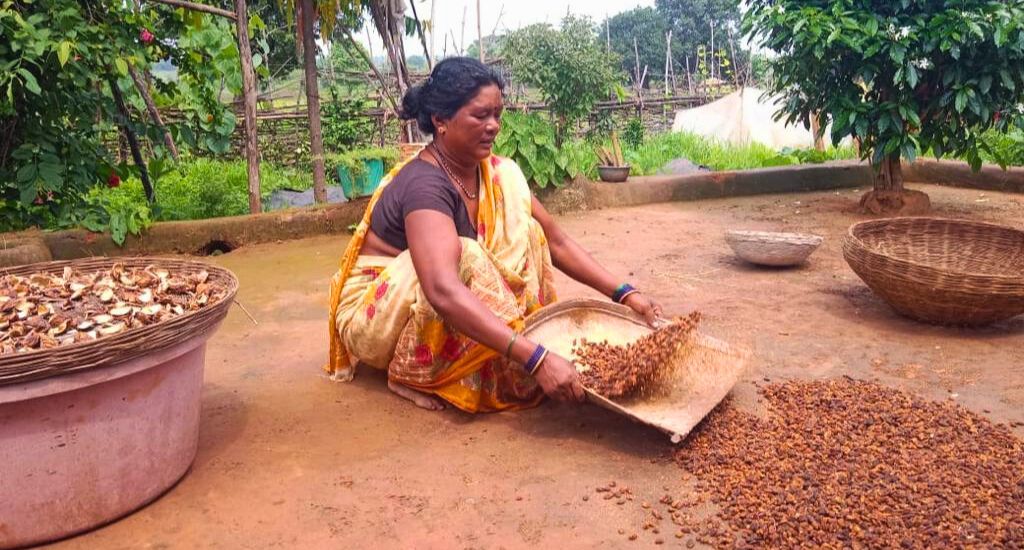
Mahua wine – the joyful spirit of tribal life
It’s time for educated urban people to shed their contemptuous attitude towards the traditional mahua wine and accept its significance as cultural heritage.

It’s time for educated urban people to shed their contemptuous attitude towards the traditional mahua wine and accept its significance as cultural heritage.
I worked and lived at a place named Narayanganj in Mandla district of Madhya Pradesh for over five years. The working area comprised a dense forest near the Kanha National Park. The topography there is undulating and beautiful. The villages in this administrative block have a predominant Gond tribe population who enjoys mahua wine.
My work involved constant interactions with village communities, persuading them to adopt various actions for their own benefit, helping them in making these activities successful and working with the local administration on their behalf. So I developed close and personal ties with a large number of families. I joined them on special occasions too, partaking of the popular alcoholic drink prepared from mahua flowers that are found in abundance here.
Mahua is a flowering tree that grows abundantly in central and western parts of India, and its flowers are used to produce a traditional alcoholic beverage. Mahua wine holds great significance in the lives of many people, particularly in certain regions of India where it is deeply ingrained in the cultural heritage.
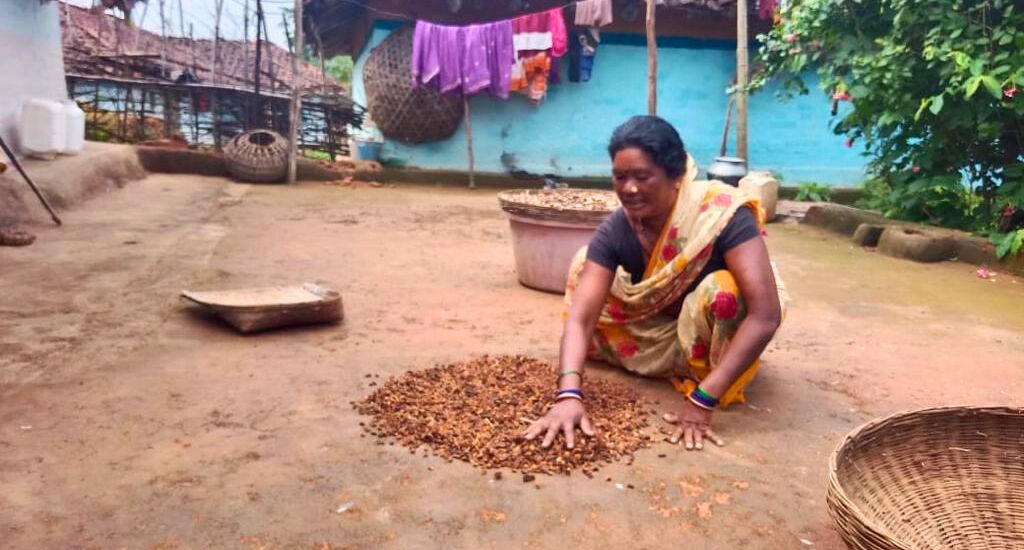
For those who embrace mahua wine as part of their cultural traditions, it means more than just a drink. It symbolises a connection to the land, a celebration of life’s moments, and a means of preserving and passing down cultural practices from one generation to the next. Whether in times of joy or sorrow, mahua wine is often present in various rituals, festivities and social gatherings.
During moments of happiness, such as weddings and festivals, mahua wine is shared among family and friends to enhance the festive spirit. It is believed to bring good luck, foster camaraderie and facilitate the bonding of individuals.
The act of coming together with mahua wine signifies unity, togetherness and sharing. The drink serves as a representation of cultural heritage, a marker of collective identity, and a way to cherish and honour the joyful as well as the challenging moments of life.
While some people have adopted making mahua wine as a livelihood activity, many tribal families prepare their own alcohol. This story is about one such family, a woman rather.
Also Read: Heritage drink feni high in Goa, falls flat abroad
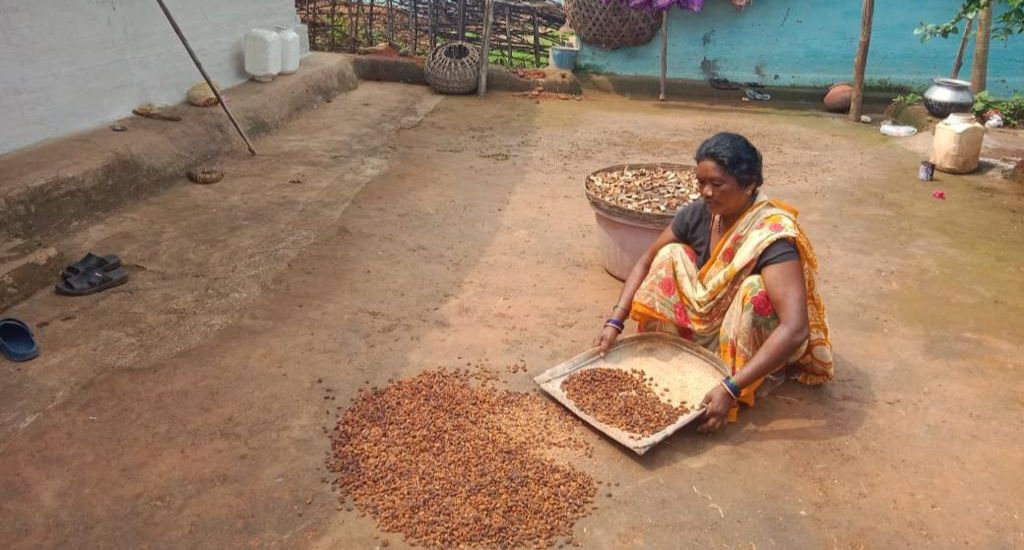
Phuliyabai of village Pandritalai was the president of the self-help group (SHG) in the village. She was an enthusiastic person in her SHG and very popular in her village.
Phuliyabai makes mahua wine that is in great demand in the village and hence is always in short supply. There is something special about the way she brews the drink. It has a wonderful fragrance not commonly found in spirits made at other tribal homes.
It so happened that a friend of mine, posted in Delhi, told me that he would be visiting me. He was to get married in a couple of months. Along with him, many other friends also decided to come. I was given the responsibility of giving them a good forest and rural tour, and also organising a stag party.
They were all typical urban people working in high-paying jobs. The spirits of their choice were all established brands of India-manufactured foreign liquor. Since they were visiting me in mahua land, I decided to treat them to Phuliyabai’s mahua wine. I requested her to prepare a lot for me, and she obliged readily.
We had deliberately kept the venue of the party near a village so that all the friends would imbibe the fresh air and enjoy the ambience of the place so close to the forest.
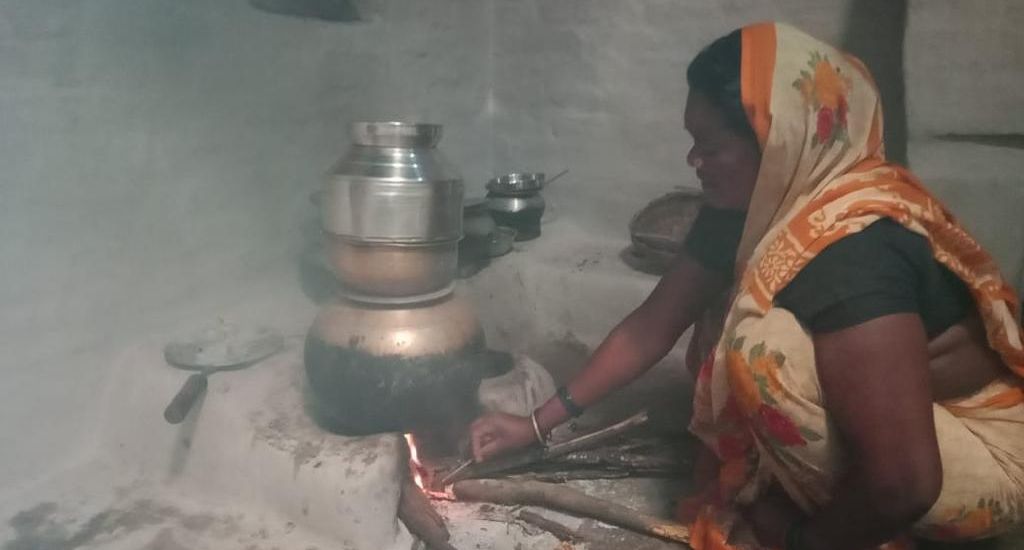
At the gathering, when I told them about the mahua wine I was about to offer, they made faces and sort of rebuked me saying it would spoil the fun. I just suggested to them to at least try it first.
The fragrant drink caught their fancy. The whole container was finished by the time the party came to its end. Everyone was full of appreciation for Phuliyabai’s mahua wine. Not only that, one of the friends told me to arrange a substantial volume for him.
Also Read: Rural homestays for solo, offbeat travellers
Mahua wine is the preferred drink in most of the tribal belt across central India. The mahua trees in the forests and on farm bunds are among the most protected trees. They flower in March and the whole tribal community can be seen busy picking mahua flowers. These flowers are dried and stored.
Often, pressed for ready cash, tribal households sell the flowers at throwaway price to local traders who arrange for storing and curing them. When the flowers are needed, the households buy them back paying much higher prices.
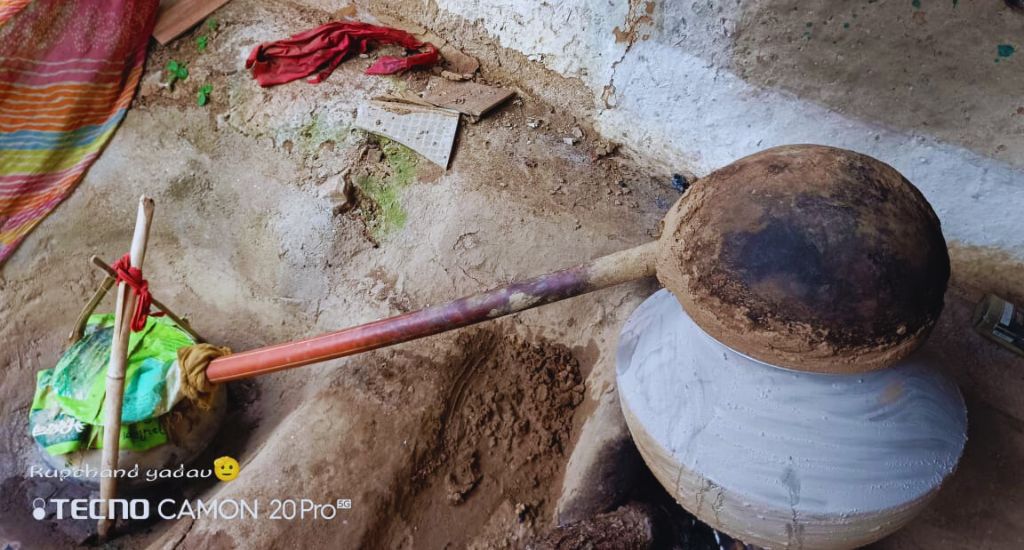
Unfortunately, laden with the ‘brown man’s burden’, a lot of people in cities tend to find fault with the tribal communities for their habitual consumption of mahua wine. They feel that the alcohol leads to waste of money from the villagers’ limited income, besides causing drunken brawls and domestic violence.
In doing so, people forget that non-tribal people in rural India as well as those in urban areas are also often addicted to drinks that are far less healthy. We need to understand the way of life of the tribal people and how mahua forms a joyful part of their life.
Also Read: Rural women in Samastipur welcome liquor ban in Bihar
The lead image at the top shows Phuliyabai of Pandritalai village cleaning the dried mahua flowers. (Photo by Hemant Kumar)
Hemant Kumar is an independent development professional in Madhya Pradesh.